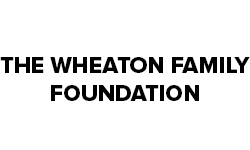Part B: Learning Plan
In this inquiry students will:
- Understand that rules are established for a purpose.
- Identify friendship rules.
- Develop rules for a new situation so that students understand that rule makers need to consider a variety of perspectives in setting rules that are perceived as fair, reasonable, needed and working toward developing understanding of common good.
- Think about behaviours that are respectful and encourage people working together.
Students will know behaviours and practices that encourage peace and harmony and promote understanding of other people.
CITIZENSHIP INQUIRY
Curricular Outcomes (Student friendly outcomes)
Analyze actions and practices in the family, classroom, and on the playground that support peace and harmony, including rules and decision-making processes. (PA1.1)
Students will think about their behaviours and work towards getting along with others.
Analyze actions and practices in the family, classroom, and on the playground that support peace and harmony, including rules and decision-making processes. (PA1.1)
Students will think about their behaviours and work towards getting along with others.
QUESTIONS TO GUIDE INQUIRY
Essential Questions – Guiding Questions:
- What makes a rule fair?
- Are rules fair for everyone?
- Why are rules different from place to place?
- Why might rules change?
- How do rules help people live peacefully together?
- How do rules change?
- How do I become a contributing citizen? How can I make my thoughts heard?
- What responsibility do citizens have to follow the rules?
Vocabulary
Common Good
Common Good
- good for all
Rule
- principle governing conduct
Rights
- entitlement or freedom
- morally appropriate thing
Responsibility
- answerable to somebody
- reliability
Engaged Citizen
- involved, active
Fair
- reasonable, just, impartial, rational
CONNECT TO TOPIC AND SURFACE STUDENTS’ THINKING ABOUT …
This section introduces the concepts and helps teachers gain an understanding of the current thinking of the class. Present essential questions and allow students to think about and talk about. Student answers will give teachers a baseline or beginning understanding of the amount of specific and incidental teaching required to explore these outcomes. Vocabulary is introduced and noted here. This section frames the “We do” portion of the lesson where teachers guide the initial structure of the inquiry.
Process
- Pose the essential and guiding questions and allow students to discuss their thoughts on the matter.
- Determine what the students know, understand, need to be able to do to master/answer the essential questions (connect to content). Additional guiding questions can be added as required. Students are encouraged to add their questions to the others.
- Create Know, Want to know, Learned Chart – identify vocabulary that requires development.
- Surface any additional questions students might have as a result of their discussions about the essential questions.
- Put the responses into a “Before, During, After” chart and post student answers for reflection at end of study to note changes in thinking.
- What is a rule?
- Who gets to make up rules?
- Why do we make up rules?
- Why do we have to follow rules?
- Do rules ever change? Why? How?
- Create Know, Want to Know, Learned chart to track learning throughout citizenship study.
- What do students know about how rules are made?
- Who makes rules? Gather ideas and increase scope of influence.
- What do rule makers consider when making up a rule?
- Should rules ever change? Why or why not? Give an example.
- Surface questions that students have.
- Identify vocabulary understandings that must be developed.
- What do students know about how rules are made?
DEVELOPING UNDERSTANDING
This section is the core of the lesson. It describes the main activity(ies) involved. In inquiry-based learning, the teacher facilitates the activities that lead to the understandings that student make of the essential questions. It is critical then, that students be allowed to raise questions and talk about issues that develop as they explore the learning activities. This forms the “We do” “They do” section of the inquiry where students are finding answers to the overarching questions and then searching for themes and patterns as possible explanations.
Students will develop an understanding of how their behaviour can impact their ability to make friends. Throughout this citizenship study, teachers should look for opportunities to model their thinking and have students talk out loud about their thinking. It is important that students become aware of how their preconceptions can impact their behaviour.
Have students:
Have students:
- Describe actions or statements that:
- promote friendship E.g. You’re funny… I like it when you…
- hinder friendships. E.g. You don’t… You can’t… I don’t like…
- Look for similarities in statements/actions (common thread) so that students learn about promoting friendships.
- Describe actions or statements that hinder friendships.
- Relay how student was feeling at the time.
- Develop Charts for comparison.
- Identify what kinds of feelings the behaviours bring about both positive and negative.
- Identify and chart the behaviours, facial expressions and body postures that students might see in each situation. This will increase student’s empathy skills and provide clues for students that body language and tone of voice are ways in which people communicate.
- Discuss and chart rules for lunch room; at recess; at a restaurant; in a grocery store; community feasts; drumming; friend’s house.
- Have students:
- Develop common thread – golden rule – do unto others.
- Determine purpose of rules i.e. safety, respect.
- Interview 3 people within the student’s life to determine rules they must follow.
- Chart rules and identify who makes the rules that impact people.
APPLY AND EXTEND KNOWLEDGE
This section includes ideas to extend the inquiry or apply concepts explored. This section may also include additional reflective questions to promote student connection to the topic. This forms the “You do” section of the inquiry – may be “you do it collaboratively” or “you do it alone”. Invite students to extend their thinking beyond the classroom discussions and inquiry experiences. Pose additional reflective questions that have been raised to encourage critical and creative thinking.
In pairs have students make up a game with 2 players and a ball. Identify rules that are needed to play this game safely, peacefully, and to have fun.
- Play the game for a few minutes.
- Analyze the game based on criteria:
- Did everyone have fun? How do you know?
- Why some didn’t have fun? How do you know?
- What happens when another person is added to the game?
- Have students discover that point of view, perspective can impact reasons why “rules” are put into place and that sometimes rules need to be changed depending on the situation.
EVIDENCE OF LEARNING
This section suggests ways in which students may demonstrate their understanding. Ideal demonstrations will be in authentic performance tasks. Each citizenship study may have its own smaller assessment piece or be compiled to support one larger performance task assessment. Assessment pieces vary, but should allow students to demonstrate their understanding in a variety of ways. Demonstrations of understanding may be done collaboratively or independently.
In groups have students share their thinking on the following questions:
- Should rules ever change? Why or why not? Give an example of a rule that should change and a rule that should stay the same and explain your reasoning.
- What do rule makers have to consider when making rules? Explain your thinking.
- Later in groups have students develop summary statements as guidelines to share with the class.
Students will demonstrate through simulations:
- How they might approach a new person to make them feel comfortable. Explain your thinking and what you are hoping to see in the other person that tells you that the person is comfortable.
Present essential questions to students and note changes in answers or understandings.
- What makes a rule fair?
- Why are rules different from place to place?
- How do rules help people live peacefully together?
- How do rules change?
- How do I become an engaged citizen? – What responsibility do engaged citizens have to follow rules?
Informal Indicators of Understanding
- Revisit K-W-L chart as a whole class to see if questions and ‘want to knows’ were addressed
STUDENT CITIZENSHIP JOURNAL OPPORTUNITIES
Students are keeping a Citizenship Journal to reflect upon their developing views of citizenship. This section provides prompts for student journals. Students are invited to choose one that interests them or propose their own. Students can also respond to any of the essential questions.
Students are encouraged to respond using a variety of genres.
- What responsibility do citizens have to follow rules?
- Why would people disagree about whether the same rule is fair or unfair?
© 2024 Concentus Citizenship Education Foundation Inc. All Rights Reserved.










